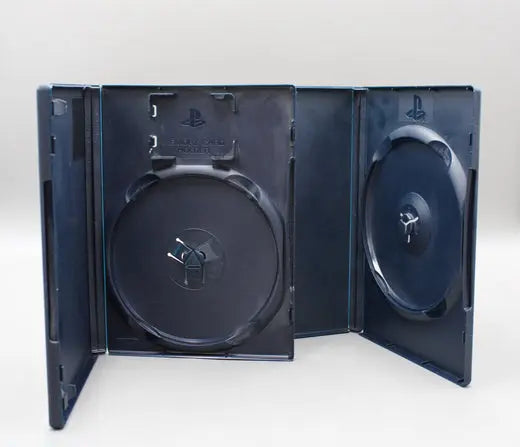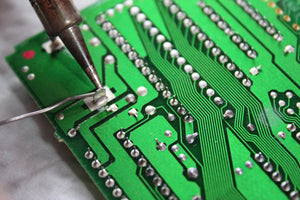The Sony PlayStation 2 (PS2) Different Video Game Cases
When the PlayStation 2 (PS2) launched in 2000, it wasn’t just the games and hardware that stood out. The packaging of PS2 games also left an impression, particularly the unique cases that housed the discs. However, over the console's lifecycle, Sony made notable changes to the design and construction of these cases. For collectors and gaming enthusiasts, understanding when and why these changes occurred, as well as their physical differences, is a fascinating journey into the history of gaming.

Lets compare the key differences between the PS2 cases.
The Early Days: (2000-2003)

At launch, PS2 game cases featured a distinct design:
- Material and Color: These cases were made of durable black plastic, giving them a sleek, modern aesthetic that stood out on store shelves.
- Disc Tray: Inside, the cases included a matte-finished disc tray, with a secure hub to hold the DVD-based game disc.
- Memory Card Holder: Early cases had a unique feature—a molded slot designed to store a PlayStation 2 memory card, which was essential for saving game progress.
- Manual Holder: A clip system on the inside of the front cover held the game’s instruction manual in place.
These early "black label" cases were designed to reinforce Sony’s branding and the PS2’s cutting-edge reputation. However, their durability and premium materials came at a cost—manufacturing these cases was relatively expensive.
Mid-Life Revision: Slimmer, Lighter Cases (2003-2006)

As the PS2’s library expanded and production ramped up, Sony made adjustments to reduce costs while maintaining the functionality of their cases.
- Material Change: The black plastic was replaced with a slightly lighter and thinner version. The case’s texture also became less glossy.
- Memory Card Holder Removed: By 2003, Sony removed the memory card holder from game cases, as its usage had proven impractical for most players. Memory cards were often stored separately for convenience.
- Manual Holder Simplification: The manual clips became less rigid, likely to save on material costs.
These changes helped Sony reduce manufacturing expenses while accommodating the growing demand for PS2 games. Despite the cost-cutting measures, the functionality and aesthetic of the cases remained largely intact.
The Late Years: Clear Plastic Cases (2006-2013) [Not in the USA]
Even though in the United States, we did not use these cases, we figured we’d gloss over them really quick!
During the latter part of the PS2’s lifecycle, Sony introduced clear plastic cases for budget releases and reprints, including games in the "Greatest Hits" line.
- Material and Color: The cases were now made of translucent plastic, often with a slightly thinner feel than the earlier iterations.
- "Greatest Hits" Branding: For re-released games under the "Greatest Hits" label, the spine and front cover featured red accents. This distinguished them from the original black-label versions.
- Disc Tray Design: The disc trays in these cases were often lighter and less sturdy, though they still served their purpose effectively.
The transition to clear cases coincided with Sony’s effort to highlight budget-friendly options for late adopters of the PS2. These cases were cheaper to produce and allowed the packaging to appeal to a broader audience.
Key Physical Differences Between Variants
|
Feature |
Early Black Cases |
Mid-Life Slim Cases |
Late Clear Cases |
|
Material |
Durable black plastic |
Thinner black plastic |
Clear, translucent plastic |
|
Memory Card Holder |
Included |
Removed and replaced with “PS” symbol |
Not included |
|
Manual Clip |
Rigid and firm |
Simplified, less rigid |
Simplified, less rigid |
|
Disc Tray |
Matte finish, sturdy hub |
Matte finish, lighter hub |
Glossy finish, lighter tray |
|
Branding |
Plain spine for all releases |
Plain spine for all releases |
Red accents for "Greatest Hits" |
Why Did Sony Change the Cases?
To state the obvious, the driving force behind these changes was cost efficiency. You can feel the difference in quality as well as see it too! As production numbers soared, small savings on each case translated to significant financial benefits for Sony. I’m curious how much money per game this saved Sony overall. It all adds up! Additionally, removing features like the memory card holder reflected a shift in consumer behavior and priorities.
By the late 2000s, as the PS3 gained traction and the PS2 became a budget console, clear cases aligned with the strategy of marketing the PS2 as an affordable gaming option for families and new gamers.
The evolution of PS2 game cases illustrates how even small design changes can reflect broader shifts in the gaming industry. From the durable and innovative early cases to the streamlined designs of the late years, these changes were a testament to Sony’s adaptability in a rapidly growing market. For collectors, these differences offer a tangible connection to the PS2’s legacy and its unparalleled success in gaming history. Which PS2 case do you prefer and why? I am used to the original case, but I also want the case to match the game. If the game was released in a newer case, then I prefer that. Drop your thoughts in the comments below!
- Lauren @ Video Game Gem Vault
Click here to shop!
Contact Us!
Email: Play@videogamegemvault.com
Call/Text: 269-213-5006
Website: Videogamegemvault.com
TikTok.com@videogamegemvault
We'd love to hear from ya!



